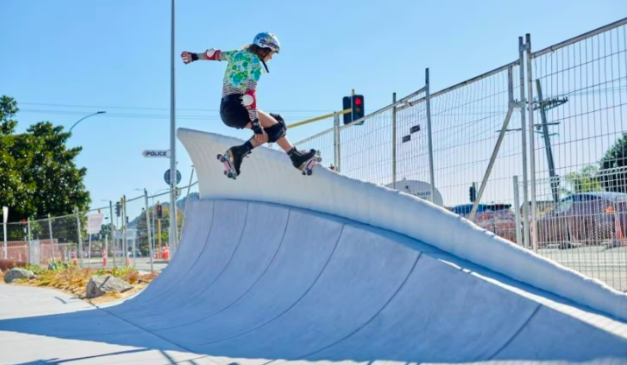This image and the article feature image courtesy of Tauranga City Council.
The skatepark caters to various skill levels, with zones designed for both beginners and advanced skaters. This project exemplifies how 3D printing can create unique and cost-effective features that would be prohibitive to produce using traditional methods. Richard Smith, Director of RICH Landscapes, highlighted the technology’s ability to realize complex and organic designs, enhancing the skatepark’s aesthetic and functional appeal.
Southern Hemisphere’s “First” 3D Printed Two-Story Building
Aussie AC firm Luyten 3D has built what it calls the first two-story 3D printed building in the southern hemisphere. Using what it claims is the world’s largest mobile AI-powered 3D printer, the Platypus X12, Luyten 3D printed a two-story granny flat in just 32 hours. The building, which includes two bedrooms, a kitchen, bathroom, and living area, was constructed in a continuous session by only two staff members.
Luyten 3D’s proprietary concrete mix, Ultimatecrete Ultraeco, played a key role in this project, offering enhanced sustainability with 20% less cement than the firm’s original mix. This achievement not only demonstrates the efficiency and cost-effectiveness of 3D printing but also its potential to address housing affordability and construction challenges.
Given the nascency of the AC sector, world “firsts” and “largests” will continue apace.
Source link : https://3dprint.com/310026/construction-3d-printing-continues-apace-with-new-projects-in-europe-and-oceania/amp/
Author :
Publish date : 2024-06-04 09:33:35
Copyright for syndicated content belongs to the linked Source.





